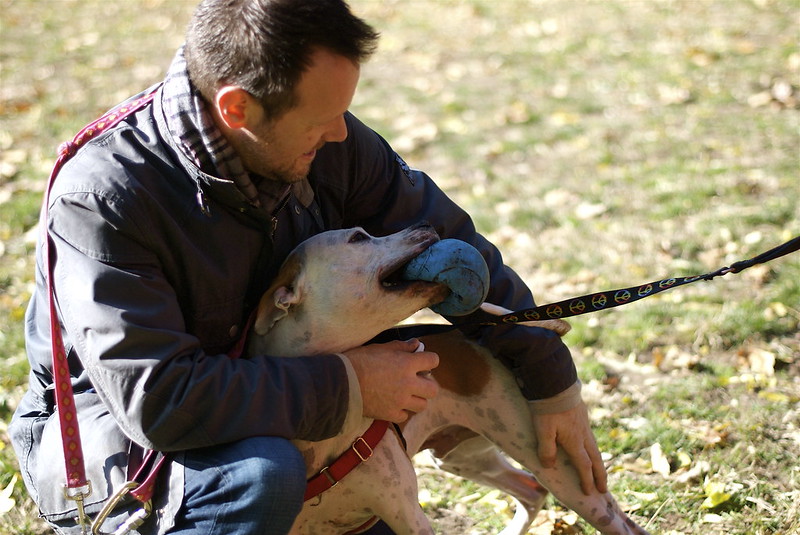The last thing any dog owner wants is for their beloved family pet to experience a life-threatening emergency. Unfortunately, dangers to dogs lurk everywhere, and often, they’re things we’d least likely expect.
Proof of this is in the 213,773 calls to the ASPCA Animal Poison Control Center during 2018 alone. Add to this, hundreds of thousands of pets are treated for or die from a wide variety of preventable accidents each year. The following are just a few of the common hazards with which dog owners should take precautions.
Chip & snack bags. Numerous dogs and cats suffocate to death in chips and treat bags each year. A survey by Dr. Jason Nicholas was reported on May 15, 2018, in the Journal of the American Veterinary Medical Association. Of 1,354 respondents, Nicholas found pet owners were home 39% of the time when pet suffocation occurred. The lethal containers included chip and snack bags, pet food and treat bags, cereal box liners, bread bags, and plastic containers, among others.
Often, dogs get into food bags that are left out by their families. In other cases, dogs retrieve them from the trash and have even been known to access cupboards. So store food bags in upper cabinets. Better yet, empty snacks and dog food into plastic food storage containers (that they can’t get their heads stuck in). Also, when you dispose of bags, cut them down the sides in case your dog or another animal finds its way into the trash.
Toxic foods. Many foods that are healthy for humans are toxic to dogs. Grapes and raisins can cause acute kidney failure and death in dogs. Chocolate can be fatal to both cats and dogs. Anything sweetened with xylitol can cause hypoglycemia, liver failure, seizures, and death to pets. Even salty foods can pose a risk like sodium ion poisoning as well as excessive thirst and urination.
Lit candles. When pets are around, candles pose added risk. Pets can easily knock over a lit candle and cause a fire. But also, rambunctious dogs or their wagging tails can get burned by the flame. Burning candles are also bad for your pet’s health, particularly scented ones.
So only burn candles when you can restrict your pet from the room. If you do burn candles when your dog’s around, place the candles up high. Just make sure the flame isn’t too close to the ceiling or a shelf above it.
Lighters. These little gadgets make for fascinating chew toys for dogs of all sizes, until the first chomp. When a lighter explodes in your dog’s mouth, it can result in a burn and even force shrapnel to lodge in your dog’s mouth or throat. Ingestion of the liquid or inhaling butane can also cause several problems and even death. So always keep lighters well out of your dog’s reach.
Heat exhaustion. All dogs can experience heat exhaustion, although certain breeds are particularly prone to it. Short-snouted dogs are at increased risk because they have a shortened breathing system. Some dogs with longer muzzles are also at high risk. So research your breed to determine how well it can tolerate heat.
Regardless of the breed, dogs should never be left outdoors without shade during warm weather. Neither should they be left in cars when temperatures exceed 40 or 50 degrees outside. Cars can heat up to exceed the outdoor temperature by 30 to 40 degrees within a brief time in the sun. Dog owners should also avoid overexercising their dogs and pay close attention to their dog for signals of distress.
Symptoms of heat exhaustion in dogs include heavy panting, a swollen tongue, tongue hanging out the side of the mouth, excessive drooling, frequently trying to lie down, or an irregular or fast heartbeat.
If your dog shows signs of heat exhaustion, it needs to cool down immediately. Get your dog into the shade or preferably air conditioning. You can also put your dog in a tub of cool, but not icy, water, or use the hose to cool him off. Another option is to apply an ice pack to your dog’s head. But don’t feed ice to an overheated dog, which can be dangerous to your pet.
HAZARDOUS PET TOYS
Rope tug toys. These pose multiple risks to both pets and humans. Playing tug-of-war with dogs is known to increase dog aggression. Tugging can also damage your dog’s teeth. Most concerning, however, are the strings. Dog’s are known to unravel or shred rope toys and ingest the strings. The strings then get tangled around the dog’s organs. This can pose a life-threatening situation that’s resulted in numerous emergency surgeries as well as deaths.
Rawhide. One problem with this leather chew toy is that rawhide is treated with harmful chemicals. There’s also the risk of salmonella poisoning. Rawhide poses a choking hazard when dogs swallow it as well. Add to this, dogs can’t digest rawhide. As a result, countless dogs experience intestinal blockage and require surgical removal of the rawhide.
Squeaky toys. These are usually made of soft rubber or cloth. So they’re easy for dogs to chew up or rip apart. The small round squeakers inside these toys are the perfect size for dogs to swallow and choke on.
Tennis and other small balls. According to many dogs, tennis balls make great chew toys. Unfortunately, they’re easy to tear apart and pose a choking hazard. If you have a medium to large dog, tennis balls pose a danger even without being torn apart. Many dogs have swallowed tennis balls whole, resulting in death.
Kong and other rubber toys. Most rubber dog toys have a hole so they can squeak or hold treats. If the hole is large enough that your dog can fit part or all of its tongue into it, this can pose a severe danger by creating a vacuum. The vacuum can cause your dog’s tongue to get stuck and become engorged, cutting off circulation. Many dogs have required emergency tongue amputations. Some have even died. To prevent suction, toys with a hole must have an additional hole on the other side so air can flow through freely, eliminating the risk of a vacuum.
Play it safe. The above is just a partial list of the numerous dog toys that pose hazards. Unfortunately, the dog toy market is unregulated, and most pet stores sell countless toys that are known to be unsafe. So always research pet toys before giving them over to your beloved dog.
By Kimberly Blaker








